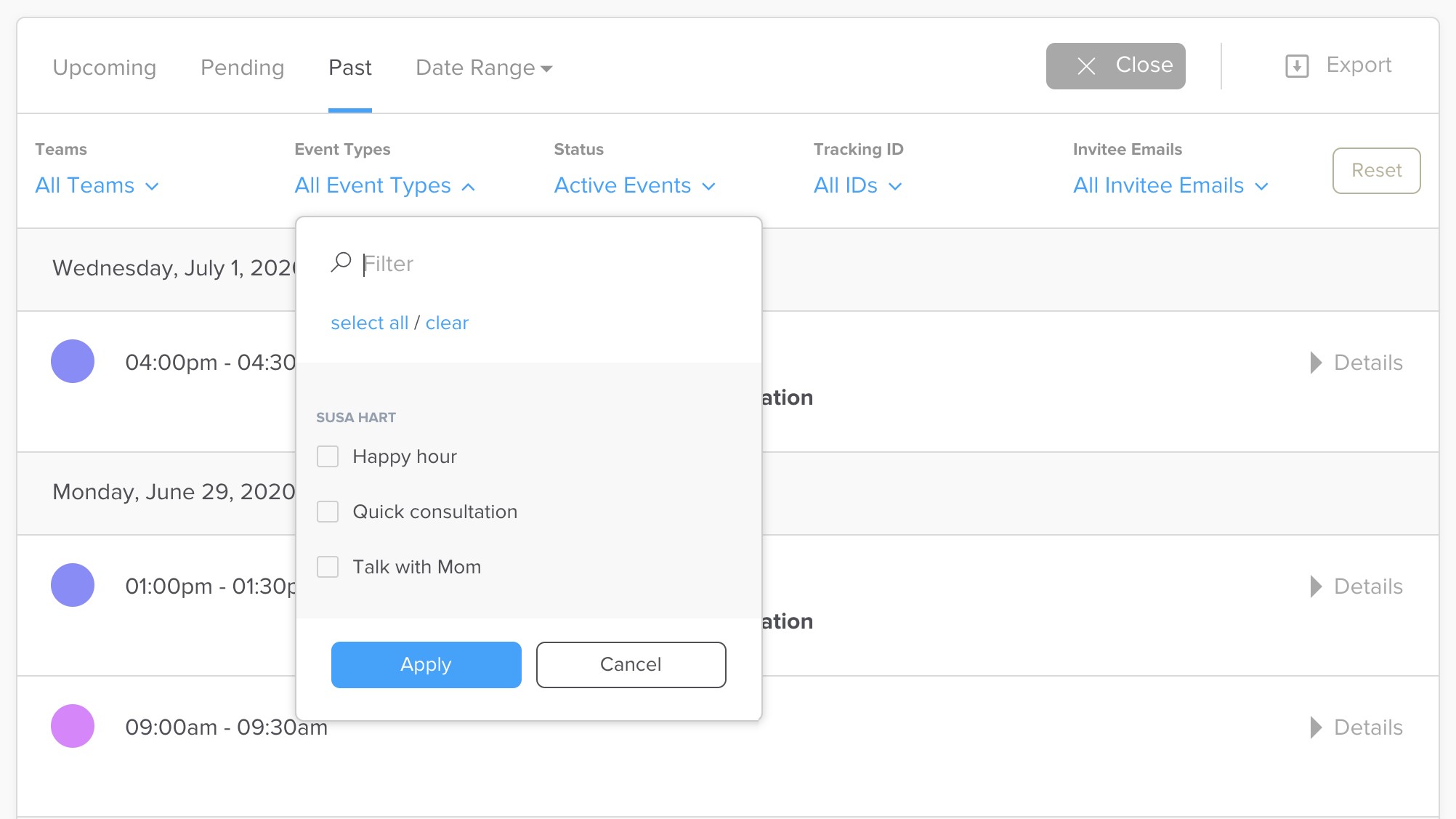TechRadar Verdict
Calendly is aimed at users who want to streamline the process of setting up meetings of different kinds, allowing for a lot of fine-tuning of the different corresponding options. If you constantly have to manage calendar schedules in your daily life and want to save your time on repeating tasks, Calendly is a great choice for you with a lot to offer. It also has a good set of features for the average user, though it’s clearly designed with power users in mind.
Pros
- +
Cross-platform
- +
Varied pricing plans
- +
Great for setting up complex appointments with multiple people
Cons
- -
Customer support could be better
- -
Interface can occasionally be unresponsive on some systems
Why you can trust TechRadar
Calendar apps have evolved a lot over the last decade, transforming into powerful scheduling and time management tools for everyone, from the average individual user to those in large organizations. Some apps offer lots of options right out of the box and require a bit more getting used to, while others are much simpler in their design and are intended to simply get the job done.
Calendly leans heavily on the former side, presenting its users with a wide range of options fit for everyone’s preferences, and offering a solution for practically every scheduling problem you can think of. Its interface is specifically designed for use in large organizations, though the app works just fine on a smaller scale as well. Calendly is also a premium application at its core, and even though a free version is available, upgrading to a premium license is highly recommended for those who’re serious about using it.

Plans and pricing
Calendly is offered in multiple versions depending on the user’s needs, and the pricing plans extend all the way up to large organizations. A free plan is available too, offering a good number of features to get one started. In fact, the free plan should prove sufficient for many people’s needs without an upgrade. As long as you don’t need any advanced functionality for organizing events between multiple people, you should be able to do just fine with the standard set of features.
Many of the premium features are aimed at organizations and their specific use cases. This includes collective one-off meetings, group events, meeting notifications via text messages, and more. Some customization options are also locked behind a paywall, including for individual events. Still, users should be able to configure their events with a lot of flexibility even without a subscription.

Features
Calendly offers a lot of features in a polished package. Events can be categorized by type (though the free version only supports one type), meetings can be set up as either recurring or one-off, with specific options for both, and there is a great deal of automation available. Users can comfortably set up automatic notifications and customize the way they interact with the platform on a deep level.
A great feature that’s unfortunately only available for premium subscribers are integrated metrics. This allows you to get a comprehensive overview of how you’ve been using your calendar, and what changes you could potentially make to your schedule to fit it better in your daily life. The application goes in a lot of depth in this regard, and it can be interesting to review your usage patterns after spending several months organizing your schedule with Calendly.

Interface and in use
Calendly manages to stand out amongst the competition despite its relatively simplistic interface. In fact, the designers have clearly put a lot of effort into making the app as streamlined and accessible as possible. Clean separation of elements, nice fonts and a logic interface flow make for a great overall experience. Everything is exactly where it should be, and it doesn’t take a lot of effort to get used to the main workflow of Calendly.
Sign up to the TechRadar Pro newsletter to get all the top news, opinion, features and guidance your business needs to succeed!
The only possible issue you might encounter here is that the interface doesn’t offer lots of customization options. There are ways to tweak how the app looks and make everything more presentable for your individual needs, but you can get a better experience in this regard from some competing apps.

Support
Calendly’s support is probably the only major downside to the app we can think of. There is a lot of information available in the help center, and it’s well-organized, but if you ever need to get in touch with actual customer support, you might face some frustration. This is the same for premium users as well, which can leave a sour taste in one’s mouth after spending money on a subscription. Still, most issues do eventually get resolved, and the team behind the app has been putting a lot of effort into improving their offering in this regard.
The competition
Calendly faces competition from other premium calendar apps like Any.do, and it’s hard to say which one stands out better. While Calendly does have some disadvantages – mainly in the way of customer support – it still fits an important niche in the current market, and offers features that will be of specific interest to some users. With that in mind, if you’re looking for a premium calendar app, it’s a good idea to compare Calendly against the current contenders before settling on any specific option.
Final verdict
Calendly’s pricing is reasonable, and the app does a great job even at the free tier. It’s a great choice for those looking to spend some cash on a premium calendar solution, and its unique style of handling large events can quickly grow on you. Some users might get frustrated by the way the app works in certain ways though, making it important to give it a good run before committing to a premium purchase. If you’re looking for something that’s regularly updated and works well, look no further – Calendly is one of the best choices on the market right now.
We've also featured the best calendar apps
Stefan has always been a lover of tech. He graduated with an MSc in geological engineering but soon discovered he had a knack for writing instead. So he decided to combine his newfound and life-long passions to become a technology writer. As a freelance content writer, Stefan can break down complex technological topics, making them easily digestible for the lay audience.

